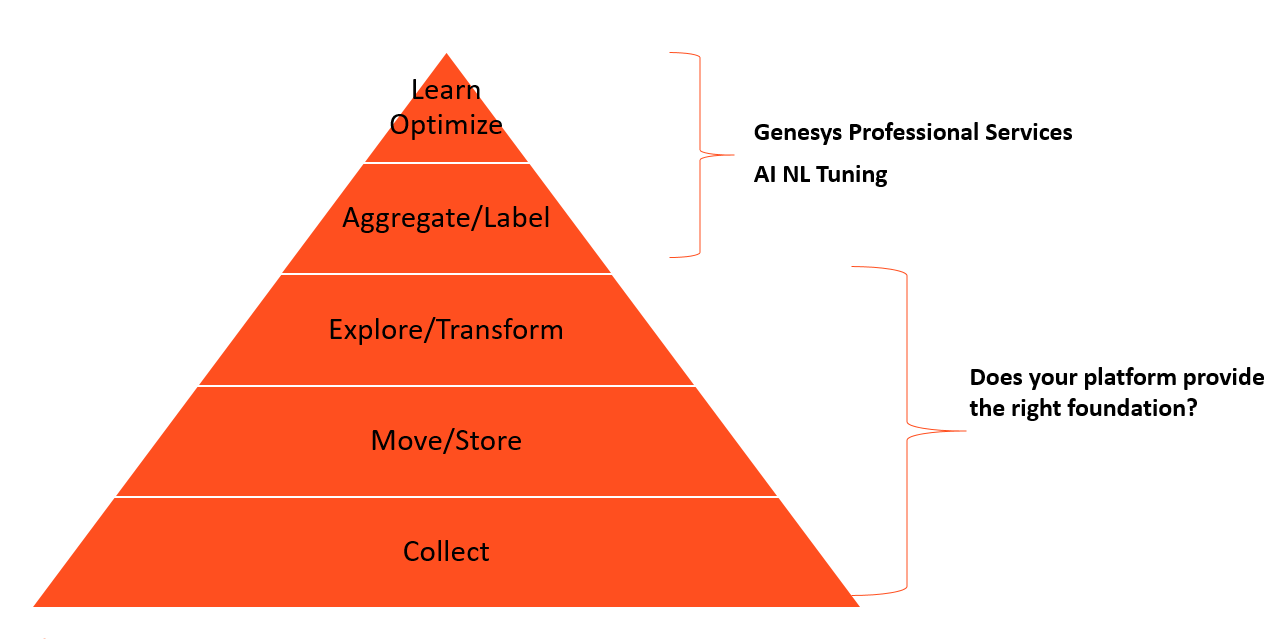Your Genesys Blog Subscription has been confirmed!
Please add genesys@email.genesys.com to your safe sender list to ensure you receive the weekly blog notifications.
Subscribe to our free newsletter and get blog updates in your inbox
Don't Show This Again.

It’s the era of plug and play; businesses can choose from a variety of components from multiple partners and service providers to create their artificial intelligence (AI) customer experience. And a customer AI journey is focused on application experience, the foundation of which is driving success.
In my previous blog post, we looked at how AI and advances in speech and context recognition can deliver customer experience to the next generation. In this blog post, we’ll explore considerations for embarking on an AI-driven customer experience journey.
Maslow’s Hierarchy of Needs is a theory of motivation that’s depicted as a pyramid —the most important (but basic) needs are located at the bottom and the most complex needs at the top. It’s time to think of the AI customer journey with this perspective as well (See Figure).
An AI experience is only as good as the data available to train and optimize the model. The data collection and consolidation mechanism must be in place to drive the right training data for these models. The richer the ability to collect data, the higher the ability to drive improved learning.
Determining the success of your company’s AI journey runs much deeper than just the choice of application; it goes deep into the platforms you choose, your reporting and analytics capabilities, and how easily you can access the data.
Consider a simple AI voicebot that specializes in booking travel arrangements. A typical initial prototype developed would consist of a few hundred utterances and intent mappings. As usage of the app increases, and you gather richer end-user interactions, you need to re-tune the AI-driven natural language understanding (NLU) model to account for misclassifications and translation errors. This continuous improvement requires rich and accurate data.
As customers embark on an AI journey, ask the following questions

Subscribe to our free newsletter and get blog updates in your inbox.